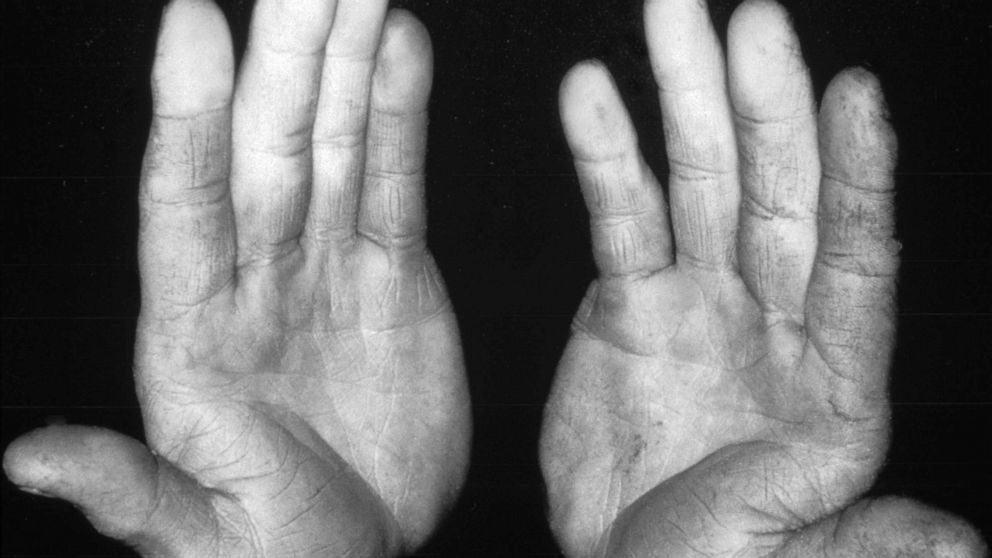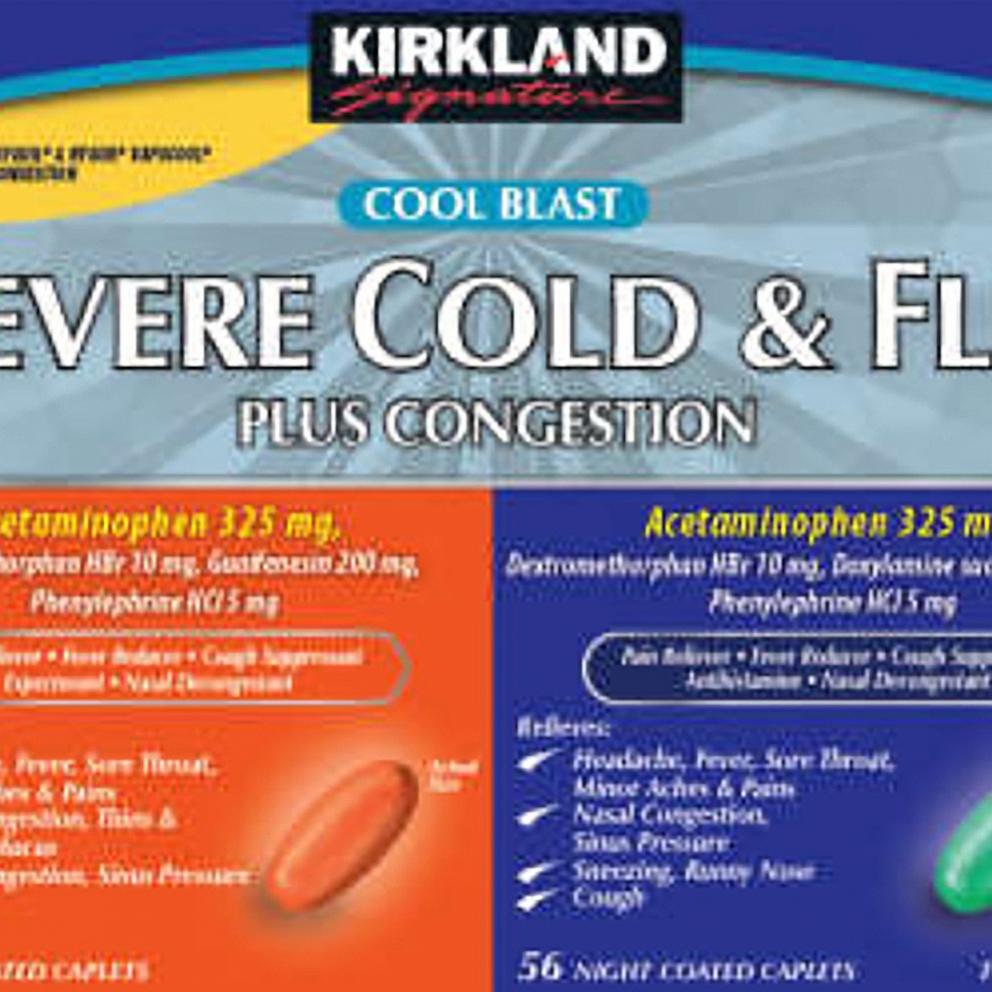Color changes in fingers and toes may be 1st sign of Raynaud's syndrome
Blue, white and red are not just the colors we've been seeing everywhere due to the recent U.S. election, you may be seeing these colors on your fingers and toes due to the cooling temperatures. It's a medical condition called Raynaud's syndrome.
Although Raynaud's is not life-threatening, if you noticed your fingers or toes turning red, white and blue this winter, you should speak to your dermatologist. For some, Raynaud's is the first sign of underlying illness, and there may be lifestyle changes and medical treatments that can help.
What is Raynaud's syndrome?
Raynaud's occurs when blood vessels in the fingers or toes suddenly narrow or spasm, leading to a blue discoloration, followed by a sharply demarcated pale white discoloration, and finally, a red discoloration. It can often be symmetric, affecting fingers on both hands. The phenomenon was first described by the 19th century French medical student Maurice Raynaud.
"It's really an exaggerated cold response: When our body is cold it's normal for our blood vessels at the periphery, such as in our fingers, to narrow to conserve core body heat," said Dr. Emily Kiemig, a dermatologist and assistant professor at Northwestern's Feinberg School of Medicine in Chicago, who specializes in connective tissue and autoimmune diseases of the skin, and frequently cares for patients with Raynaud's.
"It's normal for fingers to turn a little blue when we're in a cold environment," she said, but when someone has Raynaud's, their blood vessels narrow, even at modestly cool temperatures, and remain clamped for long periods of time. Once the blood vessels return to a normal caliber, "blood flow rushes back in and the fingers will turn red."
In the U.S., we are entering Raynaud's season. The phenomenon is classically triggered by cold, but can also occur with vibration or emotional stress. It has been described occupationally in people who operate weed whackers and jackhammers.
Raynaud's can be split into two categories: Primary Raynaud's, also called Raynaud's disease, and Secondary Raynaud's, when the changes occur in the context of an underlying condition.
"On a personal note, I have Raynaud's, and the first time I noticed it, I was in the freezing library studying for medical school exams," Keimig said, "turns out, stress combined with cold can be a potent Raynaud's trigger as well."
I think I may be experiencing Raynaud's, how do I know for sure?
The appearance of Raynaud's is often alarming. A starkly white finger or group of white fingers in response to cold is typically the herald sign.
"Some physicians say you need to see all three colors, while some say you need just need to have the blue and the white, without the redness," Kiemig said.
For those who suffer from Raynaud's, it's not only the winter months that trigger flares, sometimes even a trip to the frozen aisle of the grocery store on a summer day is enough to bring it on.
Symptoms of Raynaud's may include numbness, tingling, discomfort and even throbbing pain. People who develop ulcers at the tips of the fingers should seek timely medical evaluation as breaks in the skin can lead to infection.

I think I have Raynaud's, what should I do next?
"The first thing to do if you notice the changes of Raynaud's is not to panic," Keimig said. Fortunately, the vast majority of people with Raynaud's have the primary version and do not have to worry about an underlying disease.
Flareups typically last 15 to 20 minutes, and gradually go away as you warm up.
"There is really no gold standard testing for Primary Raynaud's, such as X-rays or blood tests," Keimig said.
People who notice this phenomenon should bring it up to their primary care doctor or dermatologist, as conditions that go along with Secondary Raynaud's may be silent and Raynaud's may in fact be the first warning sign. These conditions include autoimmune diseases such as systemic sclerosis, dermatomyositis and lupus, which can have devastating effects on the entire body. Dr. Keimig specializes in such diseases, and frequently sees patients with Raynaud's disease in her clinic who are undergoing evaluation for another underlying disease.
I've been diagnosed with Raynaud's, what's next?
"If you've been diagnosed with Primary Raynaud's, there are a few lifestyle modifications that are important because it doesn't take a lot to trigger it. You don't necessarily need a polar vortex to bring this on," Kiemig said.
Keimig encourages all her patients with Raynaud's to dress in layers, and "literally put gloves in your car's glove compartment." Patients with Raynaud's should even consider having an insulator koozie or putting gloves on when holding a cold beverage.
"Don't forget to keep the core warm," Keimig said, since the whole reason the phenomenon occurs is because the body is trying to conserve its central body heat to help keep its vital organs working.
For those with Raynaud's flares, Keimig recommends immersing hands in warm -- not hot -- water, or running tap water. "You don't want to develop a thermal burn," she cautioned.
Finally, those who smoke cigarettes should consider quitting, as nicotine can be damaging to the blood vessels.
Your doctor may also take a look at your medications as certain stimulants and chemotherapeutics can trigger Raynaud's disease.
How is Raynaud's treated?
The first thing you should do to keep from getting Raynaud's flareups is avoiding triggers.
If symptoms do develop, your primary care doctor may prescribe you a medication. Blood pressure medications have been repurposed due to their effect on relaxing the blood vessels in fingers.
"The basis of all treatments for Raynaud's is to relax the peripheral blood vessels," Kiemig said.
Calcium channel blockers are a class of blood pressure medication most frequently used to treat stubborn Raynaud's. Others, such as topical nitroglycerin paste, sildenafil and certain antidepressants, can also be helpful.
"All these medications need to be prescribed by a physician familiar with Raynaud's and the side effects of the medications," Keimig said.
For patients with very severe Raynaud's, who have ulcerations, Botox injections can even be helpful.
"Botox blocks the signal from the nerve endings to the blood vessels, so they never get the signal to clamp up," Kiemig said. Botox injections can be performed by hand surgeons or dermatologists for Raynaud's patients with unrelenting ulcerations and infections. Rarely, a procedure called a sympathectomy can be used to block the nerve signals as well.
Molly Stout, MD, is a dermatology resident at Northwestern in Chicago and a contributor to the ABC News Medical Unit.




